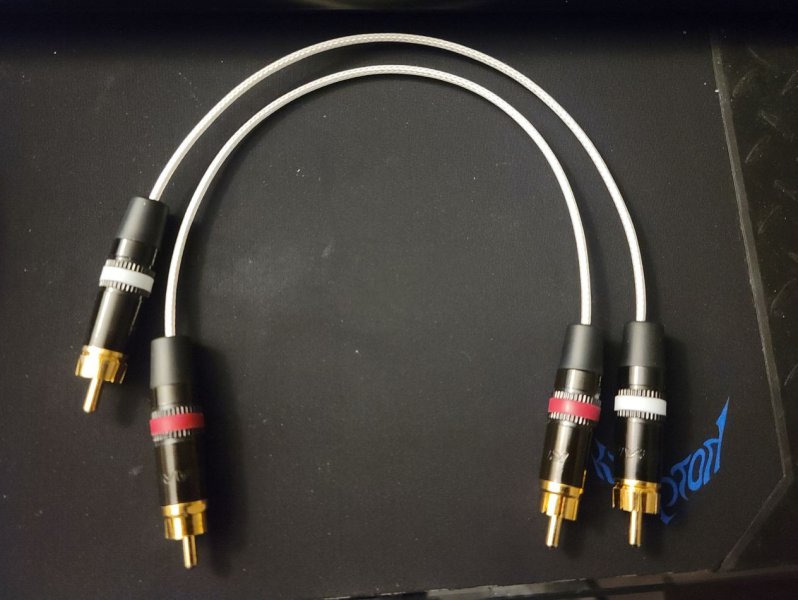AI has an opinion on this.

1. Basics of Signal Transmission:
Audio cables are responsible for transmitting electrical signals between components, such as from an amplifier to speakers. Ideally, a cable should transmit the signal without alteration, but in practice, various factors can introduce subtle changes to the sound.
2. Key Electrical Properties:
Several electrical characteristics of a cable can influence how sound is transmitted:
• Resistance, Capacitance, and Inductance:
• Resistance: The resistance of a cable can cause a loss of signal strength, particularly over longer distances. Higher resistance can slightly attenuate the signal, potentially affecting dynamics and detail.
• Capacitance: Higher capacitance in a cable can lead to a loss of high-frequency information, which might make the sound less bright or detailed.
• Inductance: Inductance primarily affects low-frequency signals, and while its impact is generally minimal, in some systems, it could influence the bass response.
• Shielding:
Proper shielding is vital to prevent electromagnetic interference (EMI) from affecting the signal. Without adequate shielding, you might hear unwanted noise or hum, particularly in environments with a lot of electronic equipment.
3. Copper vs. Silver Conductors:
• Copper:
Copper is the most common conductor used in audio cables due to its excellent electrical conductivity and relatively low cost. High-purity copper, such as Oxygen-Free Copper (OFC) or even Ultra-Pure Ohno Continuous Cast (UP-OCC) copper, is often used in premium cables. These forms of copper reduce the impurities that can cause signal degradation, resulting in clearer sound reproduction.
• Silver:
Silver is a better conductor than copper, with about 5-10% lower resistance, which means it can transmit signals with slightly less loss. In audio applications, silver cables are often described as delivering more detailed and brighter sound, particularly in the high frequencies. However, silver is also more expensive, and its impact on sound quality can be subtle and system-dependent. In some systems, silver might accentuate brightness too much, leading to a sound that is perceived as harsh.
• Silver-Plated Copper:
Some cables use silver-plated copper, aiming to combine the conductivity of silver with the warmth and cost-effectiveness of copper. These cables can offer a compromise, providing some of the detail retrieval of silver while retaining the fuller sound signature of copper.
4. Construction Quality:
Beyond the conductor material, the overall construction quality of the cable—such as the precision of the manufacturing process, the quality of the insulation, and the durability of the connectors—can affect the cable’s performance. Well-constructed cables ensure better signal transmission, lower noise, and longer lifespan.
5. Subjective Experience:
Audiophiles often report differences in sound when using different cables, and the conductor material can play a significant role in this. Silver cables might be preferred in systems where clarity and detail are desired, while copper cables might be chosen for their warmer, more balanced sound. It’s also important to acknowledge that psychological factors—such as expectations, brand reputation, or even the price of the cable—can influence how these differences are perceived.
6. Diminishing Returns:
While there can be noticeable differences between a poorly constructed cable and a high-quality one, the improvements often diminish as you invest in more expensive options. Beyond a certain price point, the differences may become more about personal taste than objective improvements in sound quality.
7. System Matching:
The interaction between cables and audio components is crucial. A silver cable that sounds bright and detailed in one system might sound overly harsh in another. Similarly, a copper cable that provides warmth in one setup might lack detail in a different context. This is why many audiophiles experiment with different cables to find the best match for their particular system.
8. Conclusion:
Different audio cables can indeed sound different, influenced by factors such as the material of the conductor, electrical properties, and overall construction quality. Copper and silver both have their strengths, and the choice between them often comes down to the specific sound characteristics desired in a system. While some differences are measurable, others are subtle and subjective, highlighting the importance of personal preference and system synergy in the world of high-fidelity audio.







